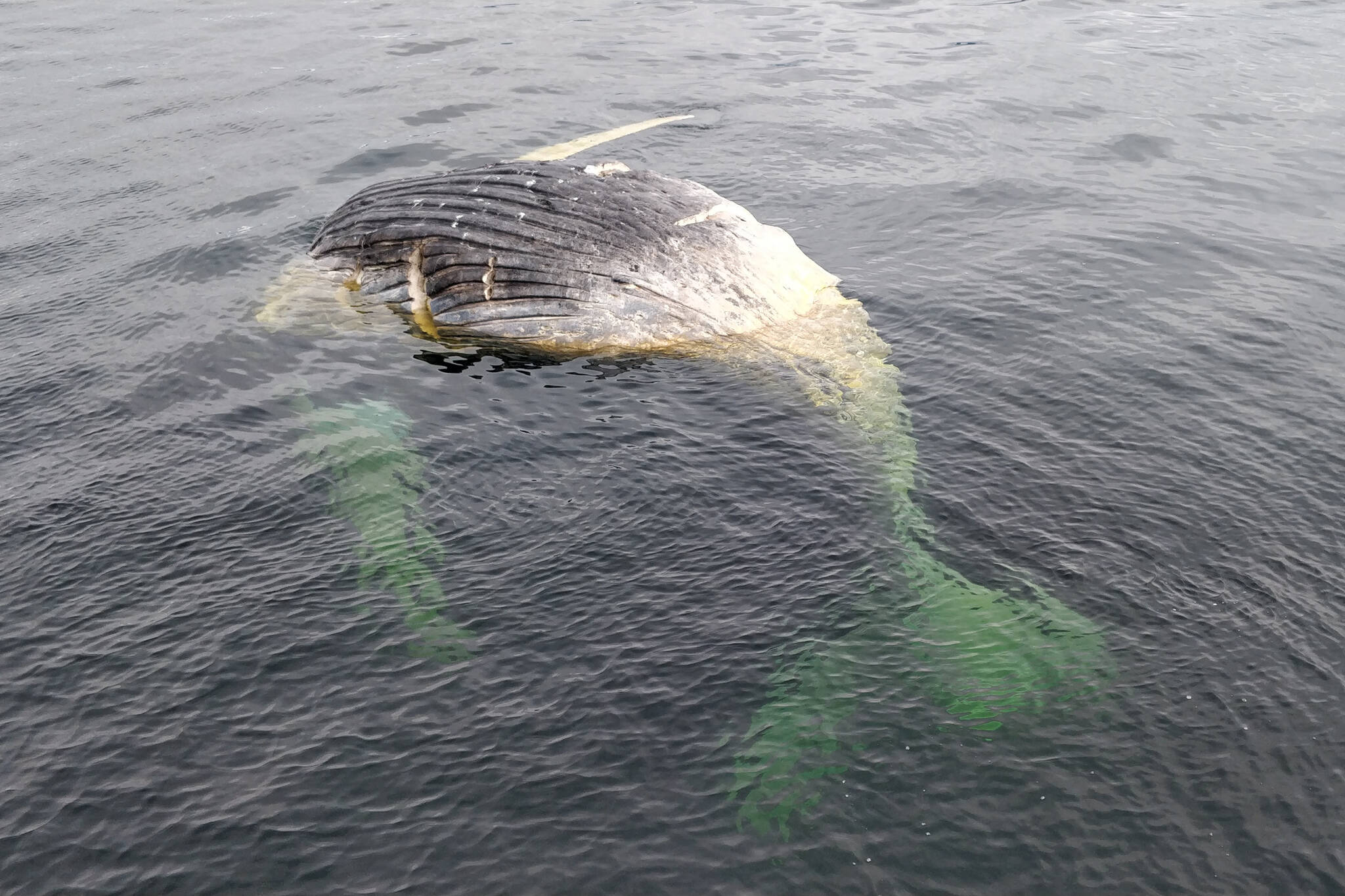A whale reported dead in early February is taking one last voyage through Southeast Alaska after a high tide lifted its corpse off a beach.
The humpback whale was first reported dead or stranded on Killisnoo Island on Feb. 10 by Alaska Marine Highway System personnel, said Sadie Wright, a large whale entanglement response coordinator with National Oceanic and Atmospheric Administration’s fisheries division.
“A big tide must have pushed her off the beach and she’s on the move,” Wright said in an email.
[Freedom of the seas: Royal Canadian Navy practices minesweeping outside Juneau]
A Coast Guard patrol confirmed the location, Wright said, and on Feb. 14, a team including Wright made their way to the whale’s carcass to conduct a partial necropsy. The whale was identified as one known to NOAA, nicknamed Spot by the organization, Wright said, and has been around since at least 1977 and possibly longer.
Wright, along with Mandy Keogh, Barb Lake, Jamie Musbach, Julie Scheurer and Suzie Teerlink conducted the necropsy. Dr. Kate Savage, a wildlife veterinarian, also supported the necropsy, Wright said.
The analysis of the whale hasn’t officially determined the cause of death yet, Wright said; NOAA is still analyzing samples.
“We did find clear evidence of past entanglement (healing entanglement scars), but do not think the entanglement alone was the proximate cause of death,” Wright said. “This whale is an adult female, with a known 46 year photo ID history as an adult.”
The whale likely weighed around 40 tons, Wright said. Such a vast amount of biomass combined with the climate of Southeast Alaska means whale carcasses can hang around for an extended period.
“Whale carcasses can persist in Southeast Alaska for months, and skeletons/bones can persist for years,” Wright said. “Temperature, current, wind, and scavenging can all significantly impact carcass persistence and fate (whether it will strand onshore or continue to float or sink).”
In this case, that persistence means that Spot’s existence on this planet is enjoying a small post script. Larry Talley, who operates a landing craft to transport freight and passengers to remote areas of Southeast Alaska, noticed something awry as he was making a run on March 3.
“So when we spotted something oddly whale-looking, but not whale-acting, in the mouth of Tenakee Inlet, I asked (whale researcher) Steve (Lewis) if we should change course to pass by more closely, and he was interested,” Talley said in an email. “As we approached we were studying it with binoculars and Steve soon identified it as a dead humpback whale. We came right alongside to get photos.”
It’s illegal to feed, swim with, ride, pet touch or otherwise interact with marine mammals or sea turtles in the wild, according to NOAA. Federal law requires that vessels stand off 100 yards or more from all whales.
The whale was in an advanced state of decomposition by then, Talley said. Wright said in an email that some of that was likely due to the effect on the whale of the necropsy.
“Interestingly there was one large male orca hanging out in the vicinity,” Talley said. “It was a mile or two away from the dead humpback whale and there was no clear reason to connect the two, but it made me curious.”
Anyone encountering a stranded, injured, entangled or dead marine mammal is asked to call the NOAA Fisheries 24/7 stranding hotline at 877-925-7773.

